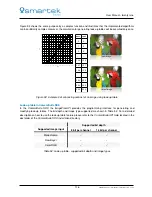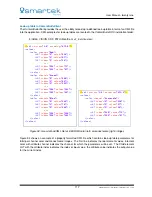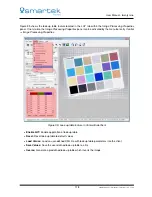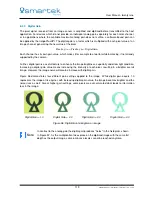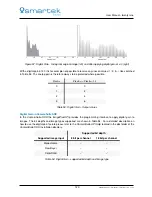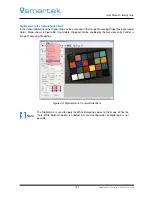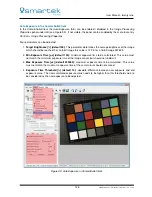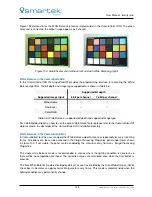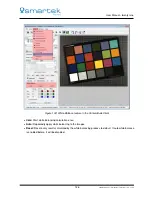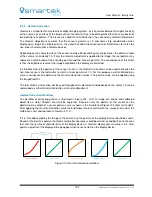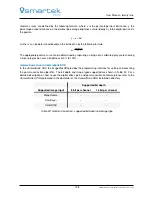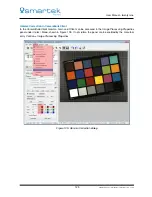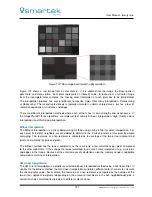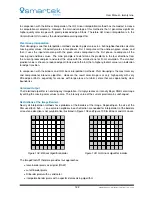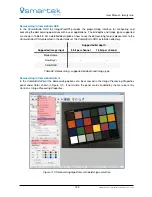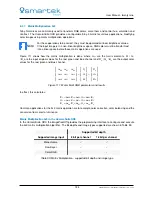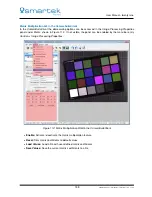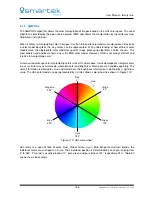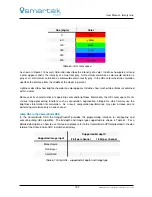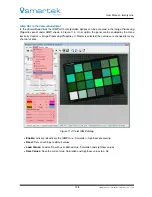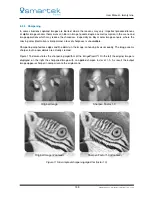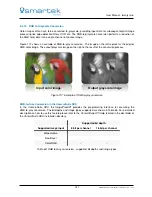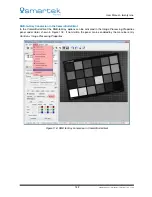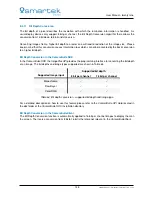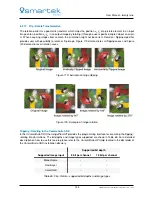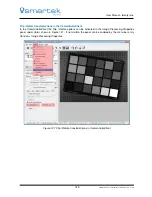
User Manual - twentynine
8.2.6
Color Filter Array Interpolation (Demosaicing / Debayering)
Each pixel on a digital camera sensor contains a light sensitive photo diode which measures the amount of
incoming light. As photodiodes are monochromatic devices, they are unable to determine the distribution of
the incoming light to different wavelengths. A common way to distinguish between different light wavelengths
or colors is to place an array of color filters (
Color Filter Array
; CFA) on top of the sensor to filter out for
example the red, green, and blue components of light falling onto it. Among many CFA patterns, the most
commonly used is the Bayer pattern. For each 2
×
2 set of pixels, two diagonally opposed pixels are equipped
with filters which are only transmissive for green, the other two only for red and blue. Since green carries
most of the luminance information for the human eye, its sampling rate is twice as that of R and B. Figure
106 shows the "GR" filter alignment, which means that the pattern starts with green (G) followed by red (R).
GR
Figure 106: Bayer Filter Pattern GR
The illustration in Figure 106 is for demonstration purposes only. In effect, each pixel is described by an
intensity value, which appears gray to the human eye, shown in Figure 107.
130
SMARTEK Vision | User Manual - twentynine | Doc. v1.0.2

